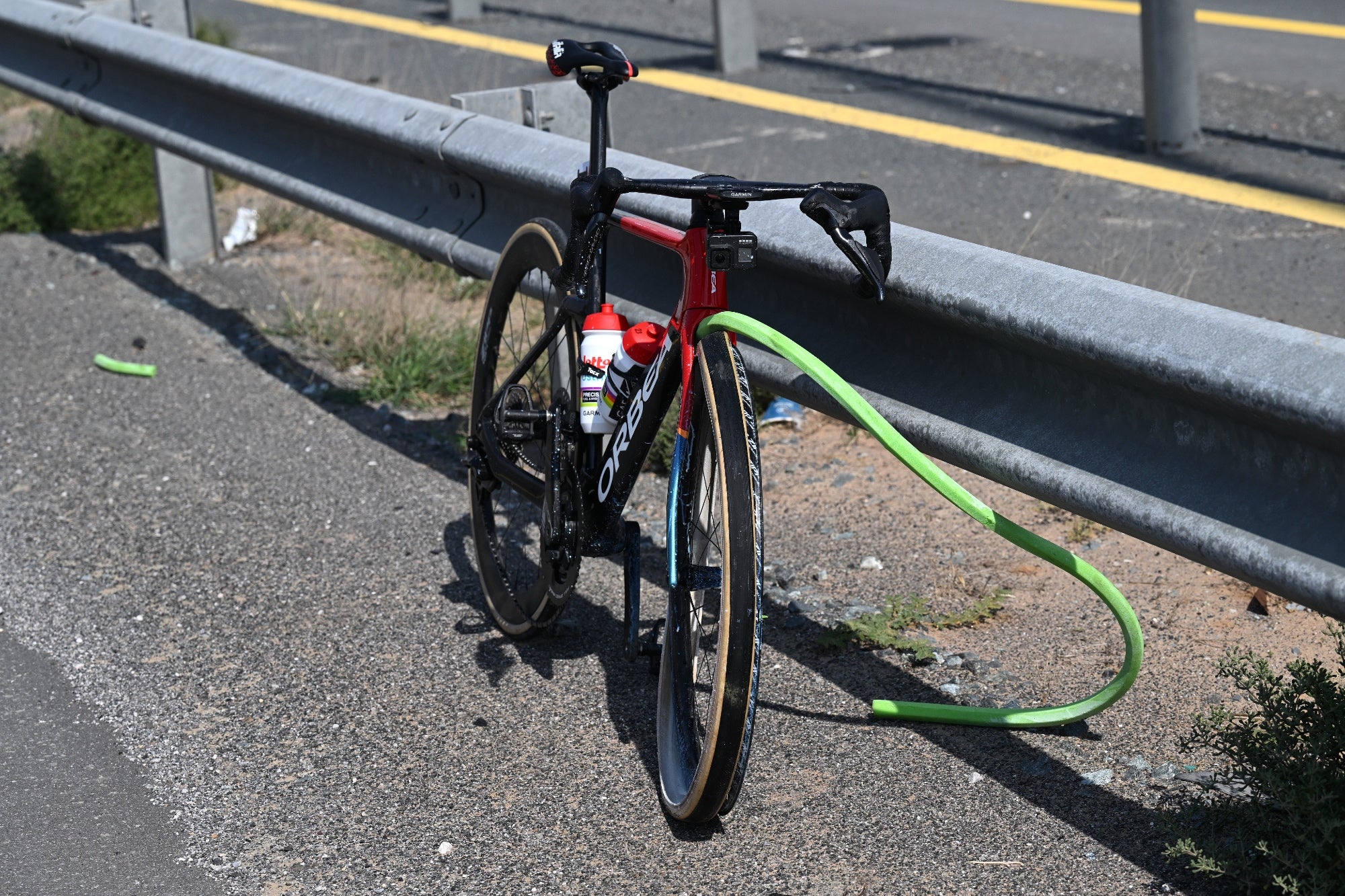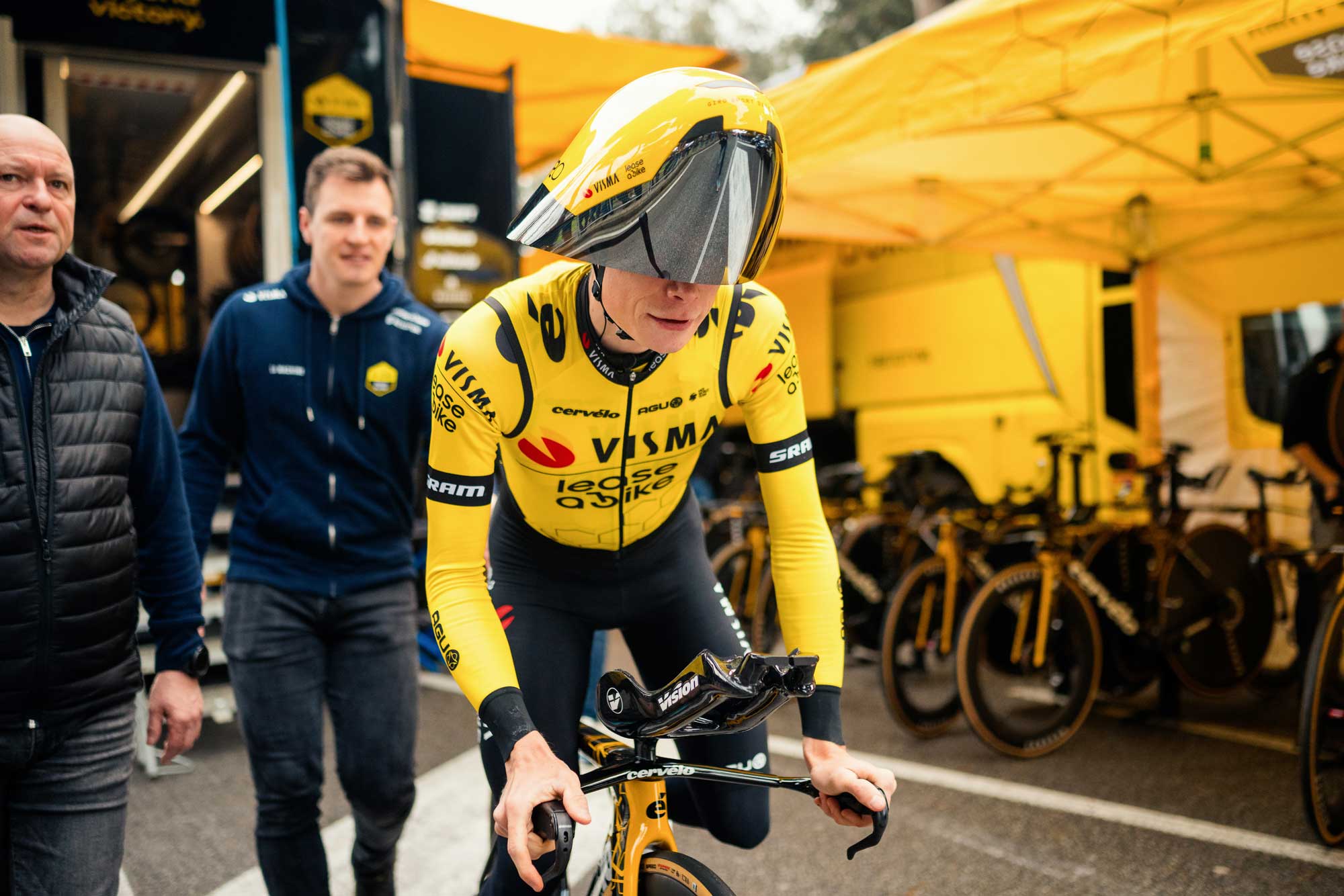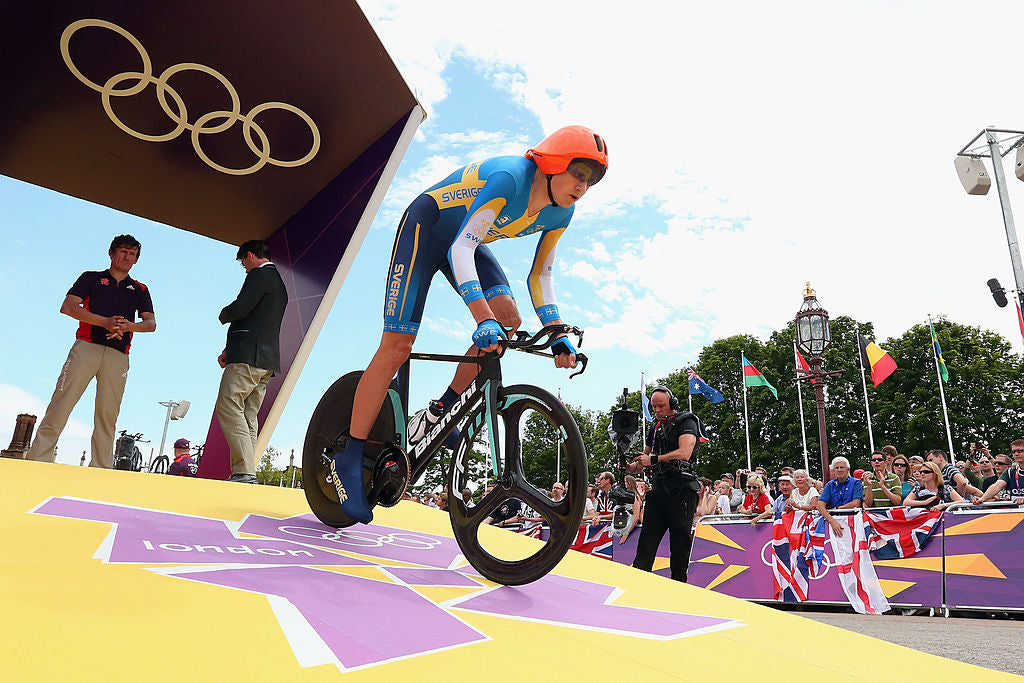The season is only a matter of weeks old yet the UCI has already disallowed a set of prototype pedals, banned Specialized's time trial head sock, threatened three other time trial helmets including the controversial new Giro and announced it will be undertaking a major review into hookless rims.
The governing body stepped in before Etoile de Bessèges at the end of January to pre-ban the oversized pedals and compatible shoe/cleat system from French brand Ekoï. This was more down to the fact that they hadn’t been approved rather than a potential rule infringement.
 Next, following Thomas De Gendt’s crash at the UAE Tour – blamed on his hookless rims by Adam Hansen, president of the professional cyclists’ association (CPA) – the sport’s governing body released a statement on March 1 titled: “Problems arising from the use of hookless rims with tubeless tyres: the UCI to examine the matter with a view to reaching a decision.”
Next, following Thomas De Gendt’s crash at the UAE Tour – blamed on his hookless rims by Adam Hansen, president of the professional cyclists’ association (CPA) – the sport’s governing body released a statement on March 1 titled: “Problems arising from the use of hookless rims with tubeless tyres: the UCI to examine the matter with a view to reaching a decision.”
The statement continued: “In light of a series of recent incidents involving the use of hookless rims and tubeless tyres (a combination commonly referred to as hookless) in professional road cycling, the Union Cycliste Internationale (UCI) has decided to study the situation as a matter of urgency with a view to taking a rapid decision in the interest of rider safety. These measures will be communicated as soon as possible.”
The manufacturers of the rim, Zipp, stated that its “internal protocols subject the tyre/rim combination to pressures well beyond any published standard [ISO and ETRTO]. This helps ensure safety not only at the maximum stated pressures but at a margin.”
But on March 4 at the start of Tirreno-Adriatico, a huge helmet was revealed that would cause the UCI its biggest headache so far. Visma-Lease a Bike revealed their controversial new Giro time trial helmets, which although within the UCI’s dimensional box of 450 x 300 x 210mm – devised to limit helmet size – set off alarm bells in Aigle with their protruding fronts and tall visors. Another statement was released titled “The UCI to carry out an in-depth analysis of the regulations governing the design and use of time trial helmets”.

The statement also contained an announcement that the integrated head sock in Specialized’s TT5 helmet would be banned as of April 2 since it was a “non essential component” (article 1.3.033 of the UCI Regulations) and that "the helmet manufactured by Giro Sport Design, which was used by Team Visma-Lease a Bike at the Tirreno-Adriatico prologue, as well as the Rudy Project Windgream HL 85 helmet (used by Bahrain Victorious) and Poc Tempor helmet (used by several teams) ... the UCI acknowledges that while this may not directly contravene existing UCI Regulations, it raises a significant issue concerning the current and wider trend in time trial helmet design, which focuses more on performance than the primary function of a helmet, namely to ensure the safety of the wearer in the event of a fall.”

While the banning of the pedals and the review into hookless rims might seem reasonable, there's something far more arbitrary about the banning of the Specialized head sock and the review of particular trial helmets – including the Poc Tempor, a design which is 12 years old and was debuted at the London Olympics.
In the case of the Giro helmet, what seems particularly at odds with the UCI's investigation into its design is that it was reputedly already approved by the governing body, with Visma's Matteo Jorgenson quoted on X as having tested the helmet in the wind tunnel in November with it already approved back then. If this is the case, could there be a legal challenge from Giro? The helmet was undoubtedly expensive to develop.
Michael Hutchinson, multiple national time trial champion who has been working with Team Ireland to develop a new skinsuit for Paris 2024, says: “I don’t think anyone is proposing that the Giro helmet is not safe or it’s not crash tested or that it’s not Snell or ANSI certified. I don’t think anyone is arguing that the rider can’t see. There’s no obvious performance advantage, either. Visma weren’t awesome at Tirreno or Paris-Nice. They haven’t found 30 watts here.”
Hutchinson suspects it all down to something else. “It’s an aesthetic thing. Is this the way we want cycling to look?"
He continues: “It’s also interesting that they’ve banned the Specialized head sock after two years because it’s a ‘non essential component’. The point on the back of a normal TT helmet is 'non essential'. I suspect they want a TT helmet to look like a Kask Mistral, which is a thoroughly excellent helmet. It’s fastest on nearly everyone who tries it. You need to size it up, but that’s another question. What size is a helmet allowed to be? If they make a smaller box rule [in order to outlaw big helmets such as the Giro] and that ends up favouring smaller riders who could wear a bigger helmet... I don't know whether that’s something the UCI has thought through.”
So what is the UCI thinking exactly? “It’s in the nature of the UCI to be reactive to things," says Hutchinson. "The UCI can’t go and invent everything and then decide what you’re allowed. They make a set of rules and people then work within the rules. It’s almost a philosophical question. Do you set the rules and then delight in people’s innovation between them or are you trying to achieve something that you have in your head and you’re constantly changing the rules to try to get what you want?”
We’ve asked the UCI for comment but haven’t received a reply yet. If we do, we’ll update this story. We've also asked Giro for comment.






























